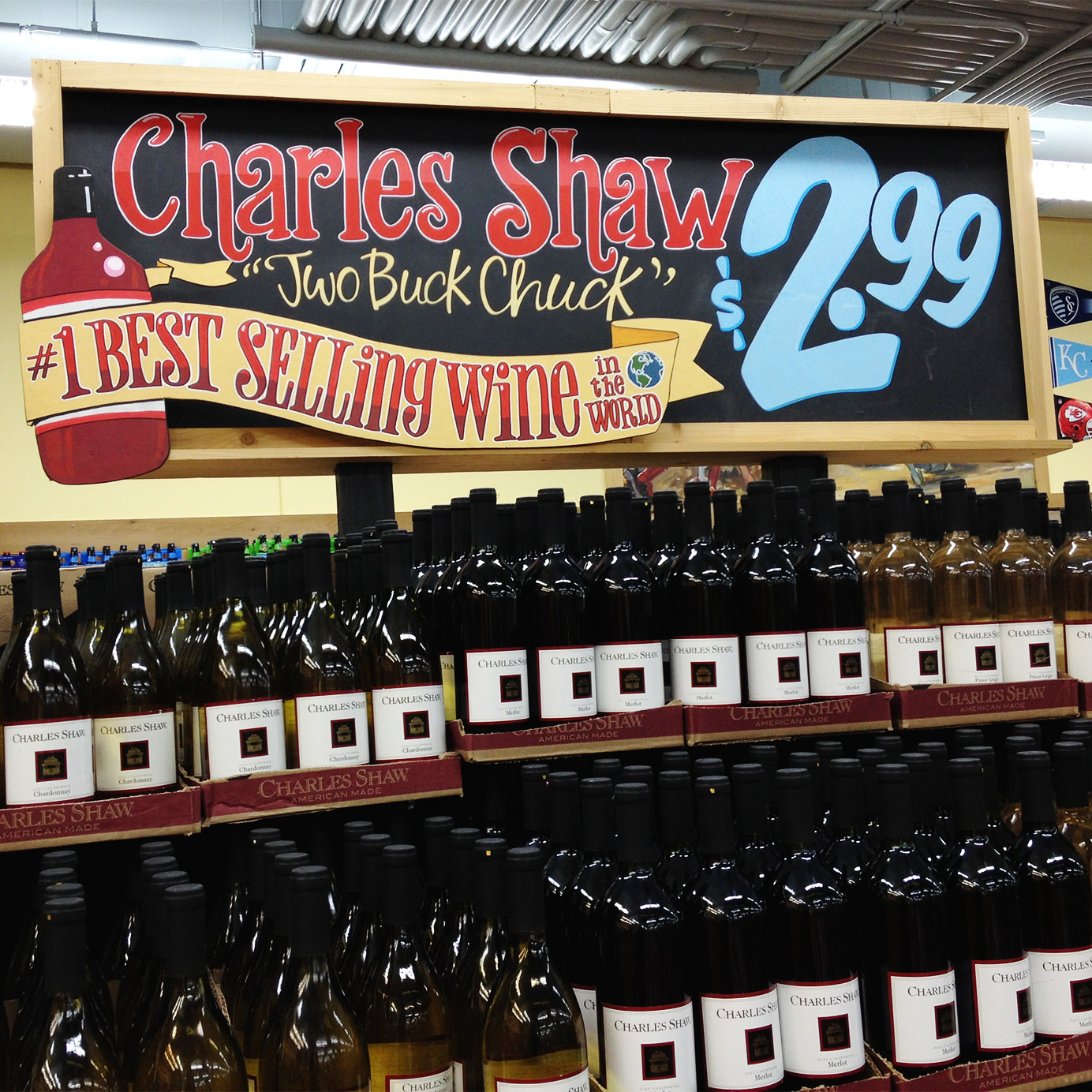Last week, Target announced it was launching a line of $5 wines to be sold in stores across the U.S. This news was gleefully received, particularly among millennial wine drinkers. Called California Roots, Target’s new line is the latest addition to the segment of “super value” wines most famously represented by the Trader Joe’s Charles Shaw line, better known as “Two Buck Chuck.”
While some are thrilled, the super value category poses an important question: How are these wines so cheap? The reality might make you pause before filling up that shopping cart.
The U.S. three-tier wine distribution system means that actual cost of a bottle of wine is multiplied quite a bit by the time a consumer purchases it. Therefore, if Target or Trader Joe’s plans to charge $5 or less without losing money, they need to make sure that the product itself costs a little as possible. While bottles, corks, labels, and packaging all go into this cost, it all starts with the grapes.
Where It’s From
Super value wines are typically made from grapes grown in hot regions with fertile soils, like California’s Central Valley, where grapes ripen easily but have very little character. This is ideal for retailers producing super value wines in bulk, or for anyone who favors quantity over quality; but it is not ideal for quality winemaking. As a result, land is much cheaper.
Bronco Wine Company, which produces Two Buck Chuck, owns over 35,000 acres of land in the Central Valley’s southern San Joaquin Valley. Large expanses of flat vineyards are able to be farmed and harvested mechanically, a cheaper alternative to manual labor that is less selective about the quality of the berries going into the finished product.
Another, even cheaper option is purchasing already vinified bulk wine at a bargain-basement price. This is how Two Buck Chuck began; Bronco Wine Company started purchasing inexpensive wines in bulk. In a 2009 New Yorker article, Bronco owner Fred Franzia was quoted advising an employee about a winery that had declared bankruptcy: “We can buy their bulk wine for two dollars a gallon, and put it in the red-wine tank.” That works out to a cost of about 50 cents per 750-milliliter bottle for the juice.
The problem here is that these winemakers have no knowledge of or investment in farming or production practices. Maybe it doesn’t even taste good. But that doesn’t matter — and that’s where the second part of the equation comes into play.
Welcome to Flavor Country
Good grapes are expensive, so super value wine brands must figure out a way to compensate for mediocre- or even bad-tasting fruit. The solution? Additives, or substances that can be added to a wine to manipulate the way it tastes.
About 70 additives are legally allowed to be added to wine, many of which, ironically, are also allowed in organic winemaking. While additives are used in small- and large-scale winemaking, the practice is best exemplified by the sensory insights lab at Treasury Wine Estates, another producer of super value wine. (It is currently unclear which company produces California Roots.) As author Bianca Bosker outlines in her controversial March 2017 New York Times op-ed, Treasury engineers its super value wines based on consumer research.
If the grapes are overripe and lacking in acidity, lab technicians add some tartaric acid. Unpleasant or uninteresting flavors can be covered up with oak chips or dust. Wines without tannic structure can get a dose of tannin powder. Batches that are too boozy can have some water thrown in. If that dilutes the flavor and color, that can be fixed with Mega Purple, the Gravy Master-esque catch-all of industrial wine.
And that’s just the beginning. Super value production relies on ample amounts of added sulfur to stabilize the wine and make it taste the same, bottle after bottle, on the shelves of Trader Joe’s or Target. While many quality wines use sulfur, these super value wines are typically sulfured so much that the person adding the concentrate to the wine must wear a gas mask.
The Takeaway
Think of it this way: If you wanted to make a soup and cooking stock was too expensive, you might use water instead. To compensate for the flavor and structure difference between stock and water, you might add spices, vinegar, or cornstarch. But in this case, spices, vinegar, and cornstarch are actually manufactured substances and chemicals that the consumer of super value wine then will ingest into his or her body. Again, the practice is totally legal, but suddenly that sub-$5 bottle doesn’t seem so tasty, does it?
There are many other factors that go into the making of super value wine, but the bottom line is this: You get what you pay for. And if you’re not paying much for Two Buck Chuck or California Roots, you’re not getting much, either.
